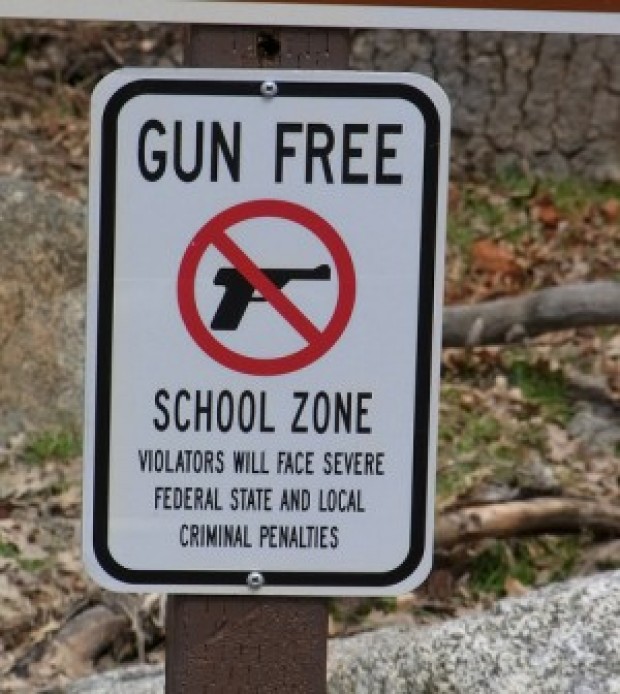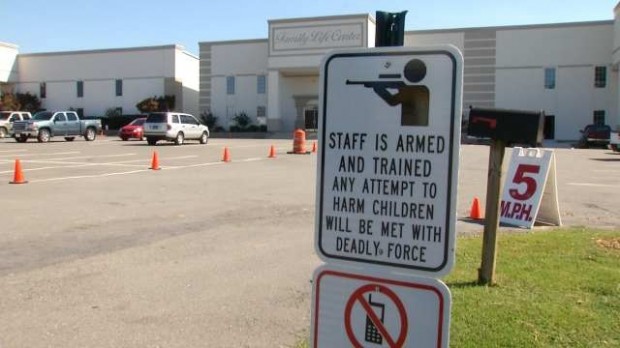By Bill Tallen, VP Tactical Operations, Pulse O2DA Firearms Training, Inc.
Previously, we have spoken mostly of tactics, techniques, and concepts associated with armed self-reliance, and the defense of businesses, churches, and communities, within the framework of rights and the law. This discussion will be a little different – because in most places in America, there is a significant hurdle of law and perception to be overcome before we can get down to specifics of “how” to protect our schools.
For most of American history, citizen carry of firearms was remarkably unregulated. Through much of the 20th Century, firearms in schools were unregulated – and even used in curricular and extracurricular marksmanship training – without commotion or incident. The federal government understood this was outside its purview, the States did not regulate the practice, and whatever laws governed carry of firearms in any public place applied equally to schools. According to the logic of modern hoplophobes it’s amazing that hallways were not awash in blood everywhere.
All this changed in 1990. In a breathtaking exercise of federal overreach, Congress passed and President George H. W. Bush signed the Gun Free School Zones Act (GFSZA) of 1990. As amended in 1995 under President Clinton, it remains in effect today, prohibiting the mere possession of a firearm within 1000 feet of any school in America.

–
Since people with ill intent do not comply with such laws, the result has been that active shooters of any sort are usually the only people armed in a school. Many unnecessary deaths and injuries have been caused by our self-imposed inability as a society to protect the helpless from this sort of evil.
There are several exceptions spelled out in the GFSZA. The most significant is for possession by any person licensed by the State. Concealed firearms/concealed carry permits issued by the state constitute a license, if state law explicitly authorizes permittees to carry on school property. Note that unlicensed carry – such as “Constitutional carry” without a State-issued permit – does not qualify for this exception.
If you watched the reports of the San Bernardino terrorism investigation and noted the extensive collection of school photographs on Syed Farook’s computer, if you know how common school attacks have been in the repertoire of Islamic jihadists outside the United States, or if you cognizant of the history of active shooter incidents in American schools then you are rightly concerned about school security.
The first question you must address, then, is primarily a political one. Does your state authorize permitted concealed carry by citizens on school property? Several states do, for example Utah, which has allowed every permittee to carry on every K-12 and college campus in the state for 16 years, during which time – surprise! – no one has been shot. If your state does not explicitly authorize this exception to the GFSZA, get to work on your legislators. In many places, this will be a hard, long, uphill fight.
Politics aside, “How we can protect our schools” boils down to this – if a potential attacker knows that at any time, in any school, there may be an unknown number of people legally carrying a firearm, most will be deterred from ever acting. If they are not deterred, armed defenders on site will give our children and their educators a fighting chance of survival.

–
If your state does not allow concealed carry in schools by citizens with permits, there are other, less optimal avenues that may be explored:
- Commissioned law enforcement officers are specifically exempted from the GFSZA – but how many jurisdictions can afford to assign even one police officer full time to every school? And what confidence do you really have, that one officer – uniformed and therefore easily identified – will have the training, awareness, and sheer luck to survive a surprise attack that would likely focus first on neutralizing him or her?
- Armed security personnel – either public employees or contractors – specifically licensed by the state are also authorized to carry under the GFSZA. However, all the disadvantages of the police officer apply. And if a city or county government cannot afford a police officer for your school, how will your school district pay for a full time armed security guard in every school; and for his equipment, and a level of training that might counteract the structural disadvantage of a uniformed, high profile target. Another drawback is that armed School Resource Officers often have other duties and responsibilities, each of which will detract from the vigilance, awareness, and reactiveness necessary to counter a violent threat.
- Armed school staff – teachers, administrators, and support personnel – present probably the next best solution to general authorization of civilian concealed carry. Many school boards, administrators, educators, and even parents are simply too uncomfortable with the idea of people carrying in their schools, unknown to them. This is a sentiment, not a rational position, as concealed carry permittees are among the most law-abiding subset of the U.S. population; but it is commonplace, and can be accommodated by allowing only employees to be armed, at the discretion of the administration. If only one out of ten school employees volunteer to obtain a concealed carry permit, to discreetly and securely carry a firearm on their person, and to meet a specified training standard, the level of security in their school building would be far higher than it is as a “gun free zone.”
Whoever is legally armed in your school, there are certain universal baseline requirements. A firearm is not a talisman; it is only a tool. Any armed defender should:
- Train and practice regularly, minimally including advanced handgun skills; basic individual and small team tactics; safe interaction with first responders; and inoculation to the stress of a lethal encounter by scenario-based training using Airsoft or Simunitions.
- Create and maintain situational awareness, including 360-degree spherical security.
- React swiftly and effectively to regain the initiative from any armed attacker.
- Be prepared to move toward the “sound of the guns” to defend the innocent.
- If shooting is necessary, shoot well.
- Make yourself hard to kill, by the proper application of speed, surprise, violence of action, use of cover and concealment, and appropriate tactics.
Defenders who can meet these standards will deter most potential attackers by their mere presence. They will have a strong chance of defeating any attacker who is not deterred, or at the very least will delay him or disrupt his plans, enabling more potential victims to escape, and buying time for first responders to arrive. This will require a high level of moral and physical courage, but what more worthy cause is there than protection of our school children?
For more detailed discussion of these steps, click here to sign up for a free online webinar with Pulse.
—–
Please welcome the team at Pulse O2DA Firearms Training to the Daily Caller. This series will appear every Saturday. Over the next 10 weeks we will cover:
–


